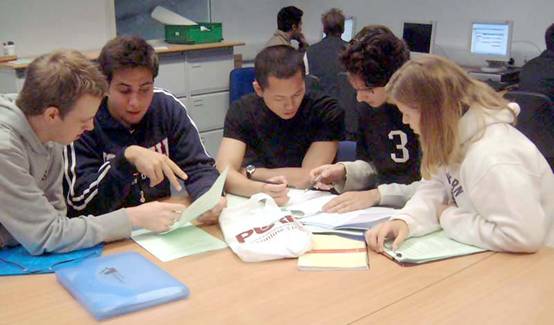By Rico Palmerin
Features Editor
For some, in our unsuspecting elementary years. For others, in that confusing, hormonal middle school. But for most, it began in high school science class and never went away. It’s…group projects.
Following an announcement of a group project, many students moan and groan as if they had just been hit by the flu. We all get the sickness eventually, but why?
Many students dislike group projects because of bad experiences—like when one or more of the members involved did not participate sufficiently. Often, this lack of participation results in a lower grade for the group, not just the individual. Like a bad taco, this one instance can be all it takes to taint group projects forever.
Other students are very independent and enjoy relying solely on their own abilities to earn their grade. For these students, group activity could mean a threat to their success should anyone be less than on par with their abilities. Let’s face it, there’s usually at least one person in the group who seems like they’d rather be watching the dust particles float through their bedroom than participating in the assignment.
With so much antagonism toward group projects, why do teachers continue to assign them? Do they just not care what students think? Or do they see group projects in a different light?
“I believe group work challenges students in some very productive ways, inviting them to think beyond their own perspectives, to share ideas, to be inspired by each other’s creativity and to form bonds with other students,” Assistant Professor of Literature & Writing Studies, Sandra Doller, said.
Professor Doller uses group projects as a large portion of the grade for her FMST 300: Elements of Cinema course.
“The group projects are also very important in this course because film is a collaborative art form, so students must learn to work together, delegate when necessary, and respect each other’s creative ideas,” Doller said.
Perhaps nothing in our courses gives us a taste of the real world as much as group projects do. They force us into uncomfortable situations, with people we don’t know very well, and demand that we work together productively. Any students who have had a job, volunteered at an organization or even joined a club can see the parallels here.
Working outside our classrooms requires these uncomfortable and irksome experiences; this is why group projects, for as much as they hurt, help us even more. They pull us away from our academically reinforced sense of self-dependence and help to prepare us for reality outside of school. A reality in which success depends on how well you function with different kinds of people.
As Doller points out, “Group projects build a sense of camaraderie and community, which I think is one of the most important things in keeping students engaged in their own learning.”
Group projects aren’t the flu, but the bitter medicine we need. So next time a group project comes up, instead of responding with the negative, habitual groan, students should make a conscious effort to have a good experience and invest themselves in the assignment and others (maybe even that dreaded dust-bunny dozer), will follow hopefully follow their lead. This is college. Time to stop acting as if caring about academic curricula isn’t cool.


